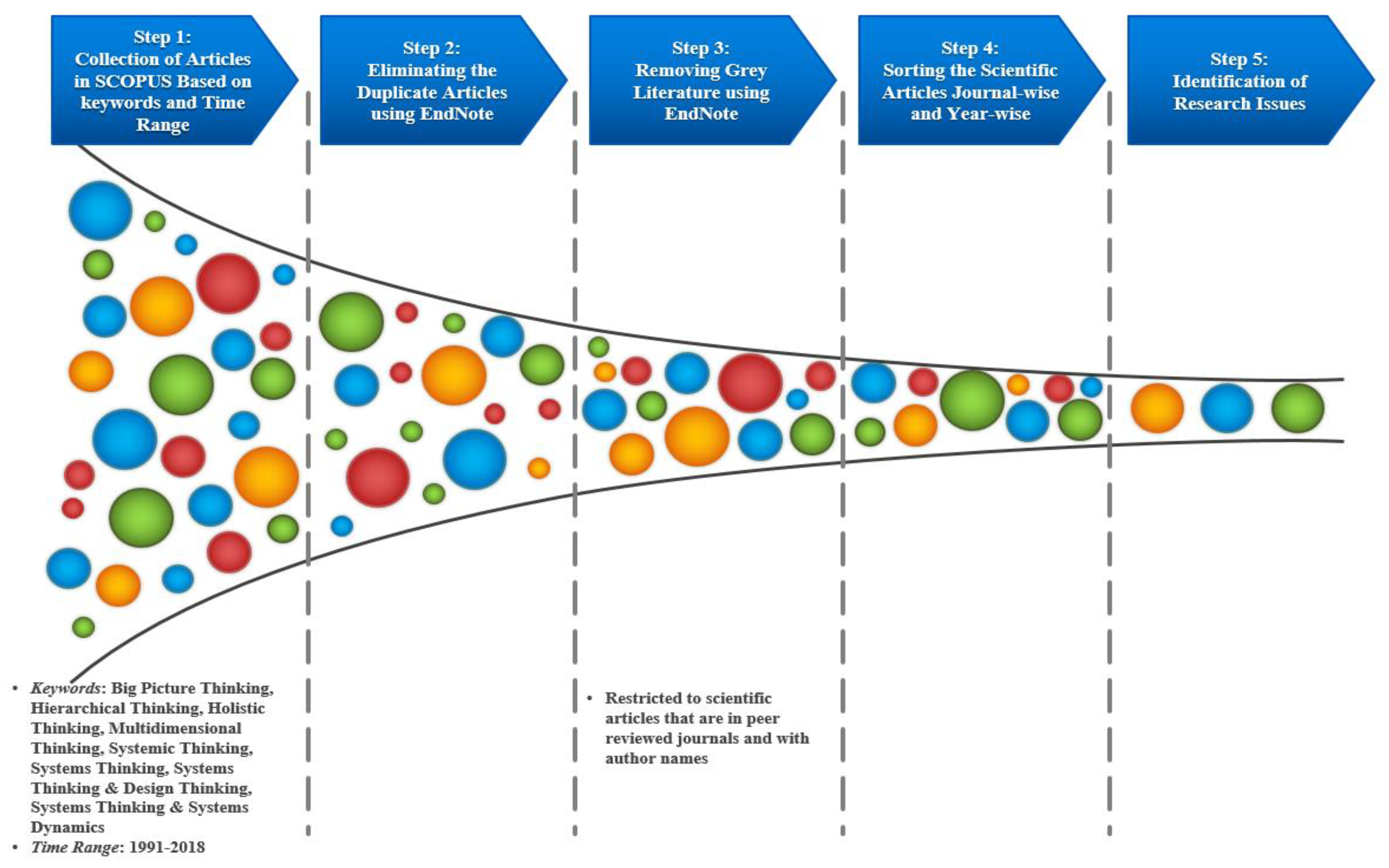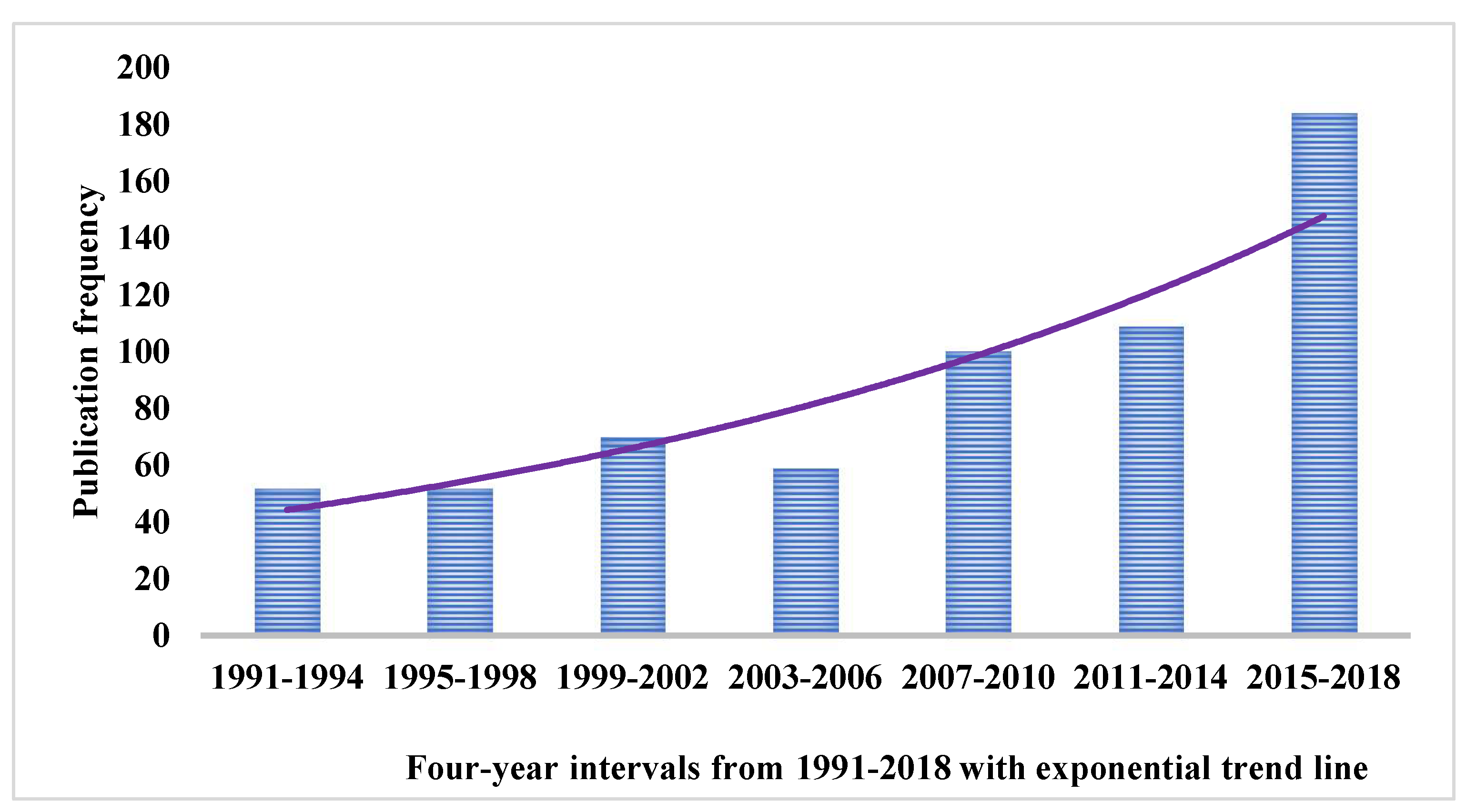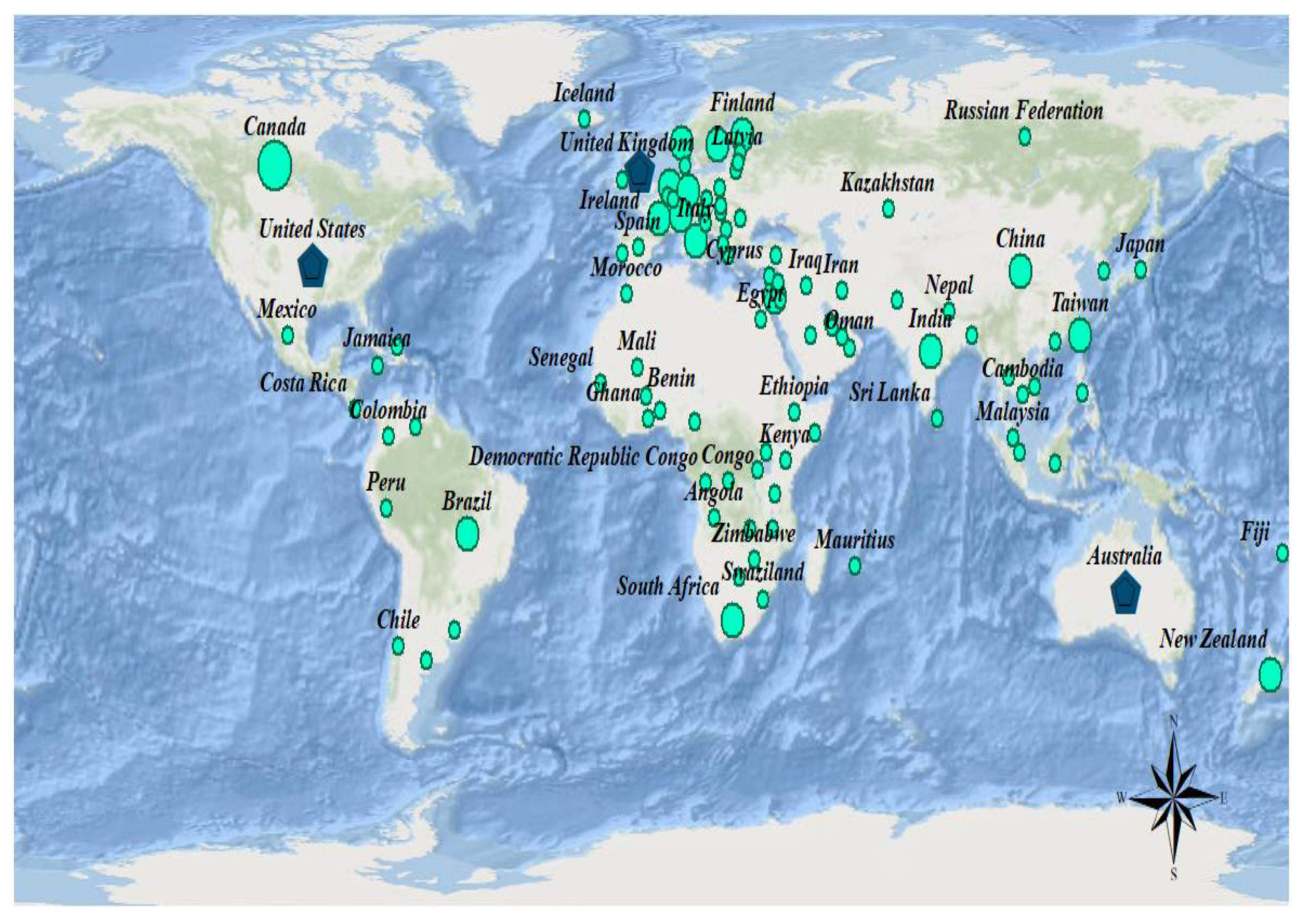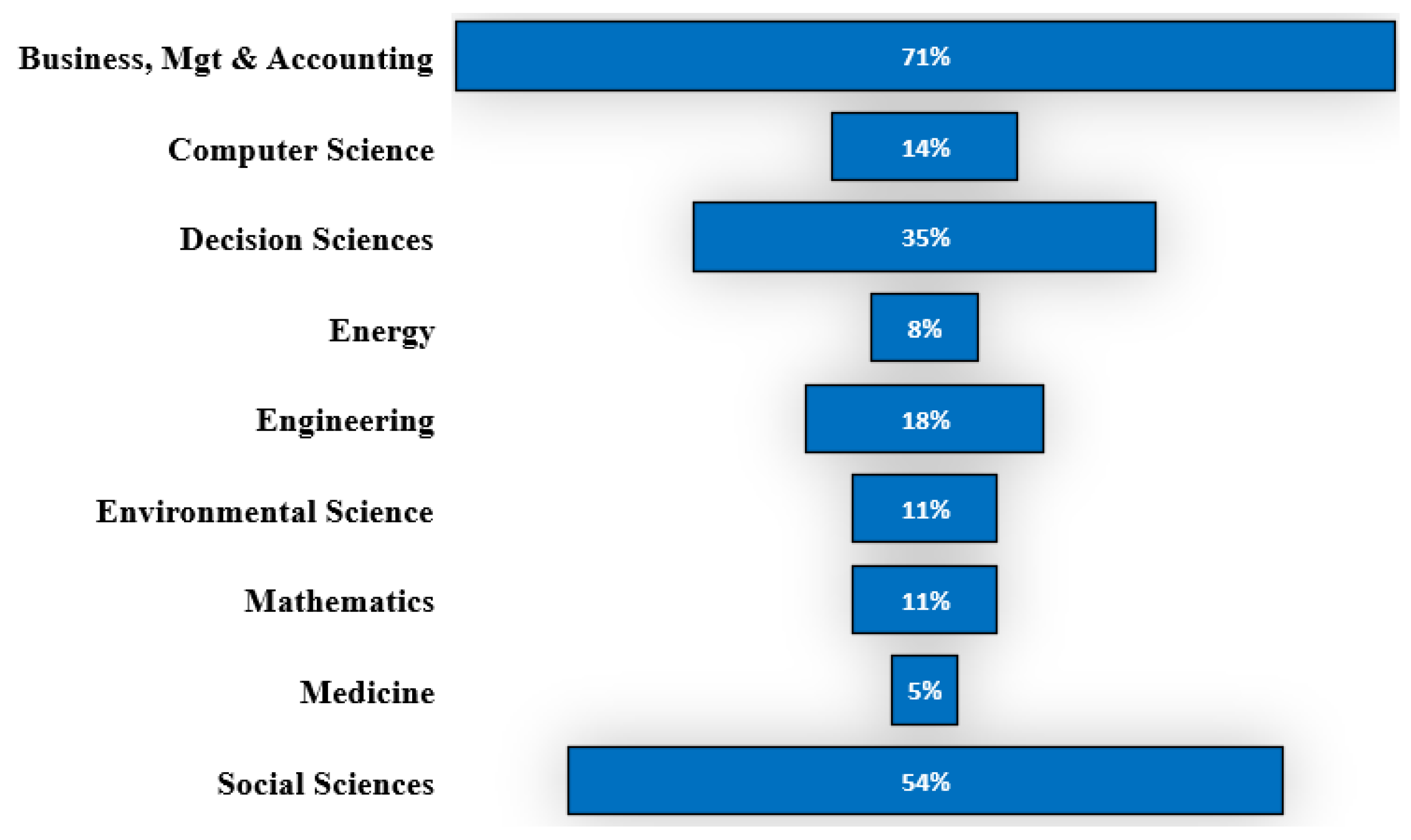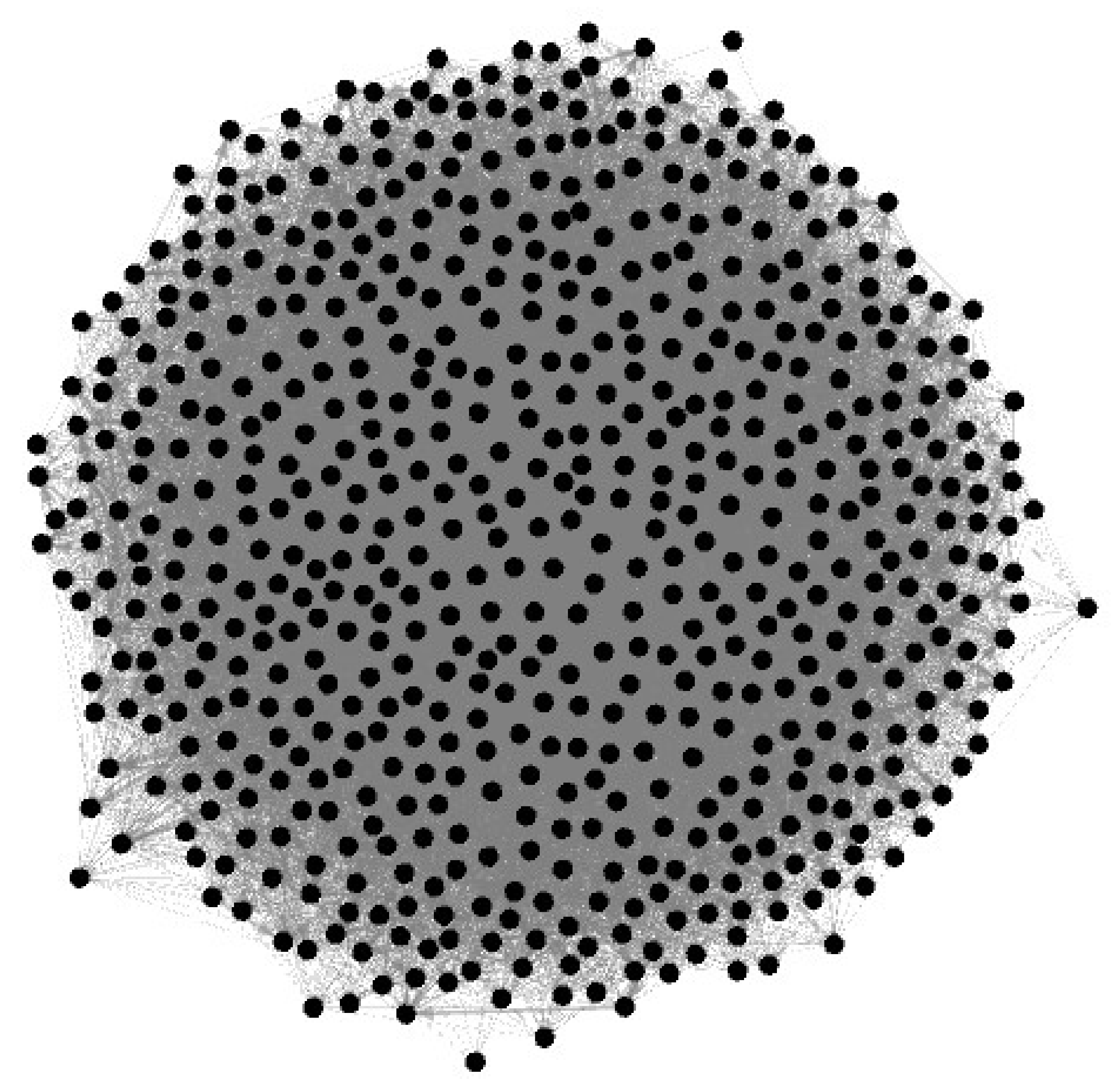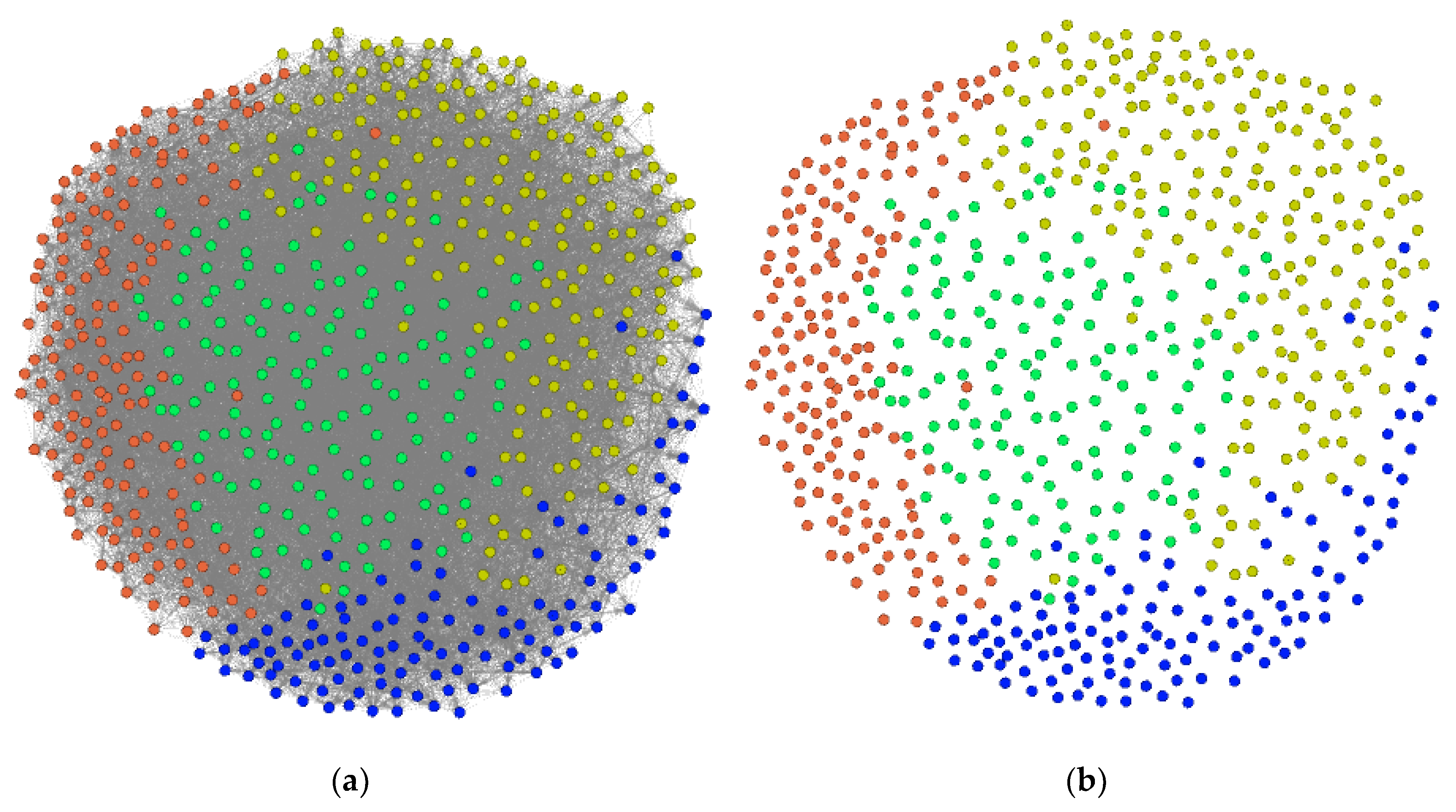1. Introduction
Organizations tend to restructure their business models due to the rapid growth of technological and economic development. As a result, organizations attempt to find new toolsets and techniques to cope with large-scale complex system problems [
1,
2,
3]. In addition to the technical characteristics, complex systems are marked by other important characteristics such as ambiguity, emergence, interconnectivity and socio-economical forces such as employee, social and government policies. These characteristics need to be taken into consideration for better management of complex system problem domains [
4]. The current traditional systems engineering approaches such as AHP are not purposefully designed to handle large complex system problems, i.e., system of systems [
5,
6,
7,
8,
9,
10,
11,
12]. To deal with such problems, researchers and scholars have used more holistic approaches through the systems thinking paradigm in conjunction with systems theory and laws. systems thinking is the focus of this research study [
5,
13,
14,
15].
The idea of systems thinking arises around 1960 as a platform to understand the dynamic behavior of complex systems when linear thinking (cause-and-effect thinking) was no longer useful for generating comprehensive solutions [
16]. In 1968, Bertalanffy [
17]—the father of general system theory—presented a concept of having a general system theory for all systems. He suggested a universal language and laws that crossed multiple disciplines with universal applicability. Following Bertalanffy’s work in systems theory, a trend toward generalized theories in biology, physics, psychology, social science, and other fields has appeared [
18,
19,
20]. The movement towards systems theory was essential due to: (1) the inability of several mathematical methods, i.e., physics to capture the idea of wholeness (the whole of the system), (2) the need to approach a problem using new ways of thinking that capture general principles for all systems irrespective of its nature, and (3) the failure of mathematical models to solve social-technical problems. The notion of systems thinking dates back to the time of Aristotle, who suggested the concept of holism as a basis for systems thinking. Many studies, perspectives, and works were introduced to describe systems thinking. systems thinking is the cognitive process, which shapes the skills to think in and speak a new holistic language [
21]. In his book, Checkland highlighted the idea of wholeness to understand complex problems. Senge [
11] stipulated that systems thinking is a theoretical framework that identifies leverage points in a system through the development of knowledge and tools over the past five decades. Flood and Jackson [
22] presented a new philosophy, total system intervention (TSI), that follows the principles of critical system thinking to address complex systems problems. Adams and Keating [
23] (p. 11) stated that understanding the principles of system theory, “in conjunction with the thought process developed in systems thinking,” is an essential and fundamental step toward understanding complex systems.
Systems thinking is applied across different domains, including social sciences, engineering, business and management, computer science and medicine. A survey of systems thinking literature demonstrated the main themes. For example, several studies focused on the general systems thinking paradigm [
5,
24,
25,
26,
27,
28,
29]. Other scholars provided a comprehensive review on different aspects of systems thinking in different fields such as the healthcare sector [
30,
31,
32,
33,
34,
35], sustainability [
36,
37,
38,
39,
40], smart cities [
41], human resource management [
42,
43], education [
44,
45,
46,
47,
48,
49,
50], general practice [
51], individual differences and personality [
52], lean [
53], digital skills [
54], gender studies [
55], virtual reality [
56] and systems engineering/system of systems [
6,
57,
58]. Other studies have attempted to link the concept of systems thinking to cognitive intelligence by using different terminologies such as mental maps, meta-learning, structural thinking, cognitive belief and mindset, which are all embodied in the concept of cognition [
59,
60,
61,
62,
63].
From the mentioned work along with other research in the literature, we can draw the main gap with respect to the existing body of the literature– there is no single study that conducted a rigorous bibliometric analysis and network analysis on systems thinking. The main contribution of this research study is to provide an advanced and detailed bibliometric and network analysis. The analysis will identify influential institutions, researchers, and emerging areas in systems thinking between 1991 and 2018.
In this research study, a bibliometric analysis is performed to provide detailed quantitative and network analyses for systems thinking literature. Network analysis is “a branch of graph theory which aims at describing quantitative properties of networks of interconnected entities by means of mathematical tools” [
64] (p. 2). The technique of network analysis is recognized as a powerful tool that helps in identifying emerging areas of research and clusters that display similar attributes. Bibliometric analysis is different from a traditional literature survey analysis as it compiles a wide range of scientific articles through large databases such as Scopus and Web of Science (WoS). Depending on the discipline or interest of the researcher, this technique provides a microscopic overview of different aspects of relevant scientific articles. Through a bibliometric analysis, researchers can unveil the research patterns, influential authors and publications, leading journals and other vibrant information in a research area. Bibliometric analysis can also play a significant role in identifying research gaps in different research disciplines. In this research study, these two techniques are applied to review the existing body of systems thinking literature. The objective of this research study is summarized as follows:
- (i)
Identify the influential articles, leading authors, affiliation statistics, top contributing countries, organizations and keywords in the field of systems thinking based on the bibliometric analysis within the span of the year 1991–2018;
- (ii)
Classify the most influential articles, current and emerging research trends pertaining to systems thinking based on network analysis;
- (iii)
Explore the different clusters in the systems thinking domain. This review analysis will be beneficial to researchers to recognize the prominent topics as well as the existing gap in the extant systems thinking literature.
Review of Existing Literature
Senge [
11] (p. 7) suggested that “systems thinking is a conceptual framework, a body of knowledge and tools that been developed over the past seventy years, to make the full patterns clearer, and to help us see how to change them effectively”, presented the importance of different perspectives, definitions and taxonomies of systems thinking developed over the years.
Figure 1 exhibits the development of influential systems thinking perspectives, methods and tools over time. The intent is not to provide an exhaustive list of scholars’ works, but rather to indicate the progress and expansion of the systems thinking domain.
It is apparent from
Figure 1 that several different systems thinking perspectives, methods, tools and approaches evolved and progressed over the decades. The main themes of most of these influential research works were referred to the complex nature of systems and the introduction of methods and approaches of systems thinking.
Table 1 presents some representative approaches, methods and perspectives of systems thinking (this list is not exhaustive).
In the literature, different scholars attempted to demonstrate the mutual inclusiveness of “systems thinking” and other related terms such as big-picture thinking [
74,
75,
76,
77], holistic thinking [
78,
79,
80,
81], multidimensional thinking [
82,
83,
84,
85] and systemic thinking [
86,
87,
88,
89]. A thorough review of the literature shows that researchers focused on the identification of systemic approaches to deal with complex system problems. For instance, in their book, Anderson and Johnson [
90] illustrated that all systems thinking related terminologies focus on the big picture of a system to support more effective solutions.
Arnold and Wade [
24] took an effort to propose a complete definition of systems thinking where the concept of traditional systems thinking can collaboratively engage with other general practices in future organizational systems., i.e., integrate various perspectives, work within a system that has vague boundary or scope, explore various operational contexts, recognize relationships and dependencies of the system capture complex system behavior, and reliably forecast the impact of change to the system. Mononen [
91] acknowledged that the use of systems thinking in different domains, such as art and science and technology, showed how these domains have similar characteristics in terms of common practice. By providing the emerging areas of systems thinking, we believe that the methodology and the bibliometric analysis conducted in this research paper will present ‘a point of reflection’ to improve practice in the systems thinking domain.
The remainder of the research paper is structured as follows:
Section 2 introduces the research methodology and initial data statistics including data refinement process;
Section 3 presents bibliometric analysis;
Section 4 introduces detailed network analysis with PageRank analysis and co-citation analysis;
Section 5 provides a discussion including the managerial implications and future research directions. Finally,
Section 6 ends the paper with concluding results and limitations.
5. Discussion
Systems thinking as an interdisciplinary domain includes a diverse and wide range of perspectives, definitions and approaches across different domains of science (e.g., management, education, systems engineering, psychology and others). Co-citation and data clustering techniques indicated that four distinct research areas are main themes that exist in the systems thinking literature. With a detailed examination of top publications in each cluster, the theme and area of each cluster are defined and presented in
Table 13.
The publications in the first cluster are dominated by the development of theoretical frameworks and methods of systems thinking. These frameworks and methods are adopted to address different research areas such as complex systems problems in public health [
29,
149], decision support system and knowledge management [
120,
145], complex systems failure [
25], management and operation research [
131], strategic human resource management [
42], smart cities [
41], action research [
5] and safety engineering [
141]. Many theories and methods are proposed to enhance the holistic perception of complex systems. The publications in the first cluster have helped in developing a dominant pattern of thoughts pertaining to systems thinking. This pattern is focused on the need to move toward a new way of thinking, holistic thinking approaches, for better navigation and management of complex system problem domains. In the first cluster, the median of publications year is 2008.
The second cluster’s publications mainly discuss the development of systems thinking tools and techniques. For example, Sweeney and Sterman [
15] and Sterman [
116] talked about the necessity of bathtub dynamic and simulations models as a systems thinking tool to develop an understanding of different concepts including, feedback, stocks and flows, time delays and nonlinearity. Other publications use different tools, case studies and frameworks to develop systems thinking characteristics including, “StarLogo” modeling language [
118], The Natural Step framework for sustainable development [
138], “critical thinking skills” framework [
70] earth systems-based curriculum [
44], a case study of low carbon energy innovation for sustainable innovation [
136], “endogenous point of view” framework [
142], “critically systemic discourse” framework [
146] and “the precautionary principle” as a systems thinking framework for Environmental Health Promotion [
150]. The work in cluster two focused on the identification of complex systems characteristics and attributes. Within this cluster, some tools and methods are proposed for systems thinking; however, most of these tools focused on one small setting or context. The median of publication year in this cluster is 2002.
The third cluster consists of publications with different perspectives and viewpoints toward systems thinking approaches. Mingers and White [
28] reviewed a systems thinking perspective with regard to operational research and management science. Senge and Sterman [
84] introduced an organizational learning perspective and elements of an effective learning laboratory. Leischow and Milstein [
143] introduced the concept of population health dynamics and Stave [
147] proposed a systems thinking perspective on public participation and involvement in environmental decisions. Based on a review of systems thinking literature, Arnold and Wade [
24] presented a unified definition of systems thinking consisted of eight elements including, recognizing interconnections, identifying and understanding feedback, understanding system structure, differentiating types of stocks, flows and variables, identifying and understanding nonlinear relationships, understanding dynamic behavior, reducing complexity by modeling systems conceptually and understanding systems at different scales. Sterman [
114] discussed barriers to learning complex dynamic systems including, improper result feedback, misperception of systemic feedback, poor understanding of the human cognitive map, poor systemic inquiry capability and poor scholarly reasoning capability. Sterman emphasized those successful approaches for learning complex dynamic systems must address all the mentioned learning barriers. Hjorth and Bagheri [
133] suggested a system dynamics approach for sustainable development to improve system performance. Forrester [
117] discussed the relationship between soft systems thinking, systems thinking and systems dynamics. Skyttner [
139] explored the nature of systems theory and its application in different domains. Holmberg [
119] presented a systemic perspective on supply chain measurement. The median of publication year in this cluster is 2004.
Since there are diverse and divergent perspectives regarding the systems thinking definitions and approaches in the domain, it is necessary to comprehend the existing systems thinking perspectives and frames of reference to better analyze the contributions, implications and limitations of each one of them. Considering different systems thinking perspectives and definitions are consistent with the concept of “holistic view” that emphasize on reviewing a system as a whole rather than a combination of segregated parts. The holistic point of view is the cornerstone of systems thinking.
The fourth cluster of systems thinking publications is devoted to diverse systems thinking applications and approaches. For example, Robert et al. [
135] investigated the relationships between different systems thinking tools called, the natural step framework, factor 10, ecological footprinting, zero emissions, sustainable technology development, cleaner production and natural capitalism, applied for the domain of strategic sustainable development. They concluded that the application of all the above-mentioned systems thinking tools is to assure the sustainable management and monitoring of complex systems. Other researchers applied systems thinking to diverse domains such as energy, water and food [
115], the Wageningen crop models [
132], resilient sustainable systems [
144], conservation agriculture [
148], oral microbial [
134], adaptive co-management to link ecology, economics and society [
137], an ecosystem sustainable approach [
121], public policy and management [
140] and solid waste management [
151]. All of the mentioned systems thinking applications and approaches were introduced in the last two decades and the median of this cluster is 2007. This list of applications shows the efficacy and acceptability of systems thinking across different domains.
Managerial Implications
There are many scattered and different definitions, perspectives, methods, applications, and approaches that exist related to systems thinking. This divergence emanates from the systems thinking literature, which is a fragmented compilation of the use of the term “systems thinking” by practitioners and scholars from different domains. Because of the diverse applications of systems thinking, the existing scope and dominant pattern of thought of systems thinking often vary, and as a consequence, there is no unified and comprehensive perspective and method that all researchers agree. Thus, there is a vital need to conduct a systematic review of the diverse literature of systems thinking to provide a big-picture regarding the contribution of researchers within the different scope of systems thinking. This systematic review assists researchers to trace the commonality among scattered perspectives pertaining to systems thinking and to identify the current gaps that need more attention. In addition, systems thinking is an interesting topic for many different domains such as systems engineering, education, management, social science and others, which resulted in the inclusion of different perspectives and methods from engineers, educators, managers and other researchers. Therefore, by context, any taxonomy is somewhat arbitrary, and no doubt, other classifications or categorizations are possible. Each is correct from a particular vantage point. Below we summarize some of the research implications for academia and practitioners:
This research paper articulates valuable information on systems thinking research in terms of the most influential journals, most influential affiliations, most influential authors and most influential studies in the extant literature. The new/interested researchers/practitioners can select which papers to cite, what are the most relevant papers, what is the most influential paper within the systems thinking domain.
This research paper manifests the scope of systems thinking research, theoretical and empirical issues pertaining to the relevant literature by means of content analysis. Therefore, both academicians and practitioners can obtain a broader understanding regarding the extent of a topic, emergent trends and its evolution over time. In this sense, this research is different from a traditional literature analysis.
The findings of this research study would serve as a “blueprint” for the academicians/practitioners who are keen to conduct research within systems thinking context.
Moving beyond the existing literature, this research would foster and propagate a richer dialog that may be fruitful to the body of knowledge of systems thinking.
6. Conclusions
Systems thinking is a fast-growing and interesting topic for practitioners, government, military and researchers in diverse domains including, systems engineering, management, education, healthcare and others. However, there is a lack of unified linkage among different and scattered articles relevant to the systems thinking domain. Bibliometric and network analyses were performed to find the top contributing authors, journals, organizations, countries and keywords in the systems thinking domain, to rank top influential articles using co-citations and PageRank analyses from 1991 to 2018 and to cluster four major categories of research in the systems thinking domain. Bibliographic and network analyses assist in identifying the significant contributor, valuable publication, research type and design that moves the systems thinking domain forward. Additionally, this article tries to exhibit the existing literature gaps and research trends that need more attention from researchers in the systems thinking domain.
As we have applied a robust technique to conduct a systemic review of the last thirty years of the literature of systems thinking, our research still subjected to some limitations. One of the limitations is that the influential works were decided by the usage of citation and co-citation analysis; however, some of the potential articles, which may be influential, but published recently, may not appear in the current research. This limitation is related to the likelihood that recent articles to get significant and reliable PageRank is less than the older articles. In other words, a recent article may be rigorous, but since it has not been widely cited or recognized by other researchers yet, it has a low PageRank now. PageRank analysis has another limitation in terms of the stability of journals’ reputation over time. Since the reputation of the journal, which is fundamental in PageRank calculation, may change over time, the PageRank of articles published in that journal needs to be upgraded. An avenue for future research can be the usage of other methods such as SCImago Journal Rank and comparison of results from different methods. The comparison is important because it gives better estimates of the validity and reliability of each method. The future research can be extended by (i) Expanding the current keywords to broaden the scope of the search (ii) Performing joint author-cluster analysis to observe the authors’ contribution to the evolution of clusters (iii) Performing dynamic co-citation analysis to understand the evolution of systems thinking research over time.
The intent of this work is to provide a comprehensive review of previous and current research trends and themes in the field of systems thinking. Due to diverse perspectives, convergence and applications of systems thinking among worldwide researchers, this work reports the influential statistics pertaining to systems thinking and provides an avenue for interested researchers to better understand the nature of the field by exploring the content of the report. It is apparent from the results that there are four clusters in the field are still under-development. The first cluster is related to theoretical, conceptual and methodological aspects of systems thinking. The research in this cluster is gradually improving and expanding; however, it is still in the maturation phase since there is no universally accepted theories and concepts. This is also the case for the second and third clusters in the sense that different schools of thought and perspectives, as well as tools and techniques pertaining to systems thinking, are not fully accepted or validated. With respect to the fourth cluster, many diverse systems thinking applications, implementation and approaches are still emerging. As a result, we believe that the fourth cluster will remain expanding since systems thinking is used across different disciplines. Another noticeable fact is that the countries where English is the first language have dominated the publication frequencies in the field of systems thinking, which may also suggest that other countries where English is not the first language need more time to conduct more research in this field.

